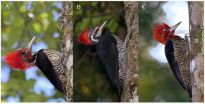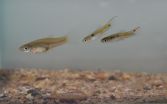(Press-News.org) In preliminary research, the detection of persistent leukemia-associated genetic mutations in at least 5 percent of bone marrow cells in day 30 remission samples among adult patients with acute myeloid leukemia was associated with an increased risk of relapse and reduced overall survival, according to a study in the August 25 issue of JAMA.
Approximately 20 percent of adult patients with acute myeloid leukemia (AML) fail to achieve remission with initial induction chemotherapy, and approximately 50 percent ultimately experience relapse after achieving complete remission. Even though potentially curative therapy (e.g., allogeneic hematopoietic stem cell transplantation) is now available for many patients, this therapy is expensive and is associated with significant side effects. Identifying patients at high risk for relapse would be helpful clinically, according to background information in the article.
Timothy J. Ley, M.D., of the Washington University School of Medicine, St. Louis, and colleagues sought to determine whether genomic approaches can provide prognostic information for adult patients with AML. Whole-genome or exome sequencing was performed on samples obtained at disease presentation from 71 patients with AML (average age, 51 years) treated with standard induction chemotherapy at a single center starting in March 2002, with follow-up through January 2015. In addition, deep digital sequencing (next generation sequencing that permits sequencing of hundreds to thousands of individual molecules of DNA) was performed on paired diagnosis and remission samples from 50 patients (including 32 with intermediate-risk AML), approximately 30 days after successful induction therapy. Twenty-five of the 50 were from the cohort of 71 patients, and 25 were new, additional cases.
Analysis of comprehensive genomic data from the 71 patients did not improve outcome assessment over current standard-of-care metrics. In an analysis of 50 patients with both presentation and documented remission samples, 24 (48 percent) had persistent leukemia-associated mutations (mutations that are known to exist in a leukemia sample when the patient presents with the disease, but are not cleared after the initial chemotherapy is given, and the bone marrow recovers) in at least 5 percent of bone marrow cells at remission. The 24 with persistent mutations had significantly reduced event-free (6 vs. 17.9 months) and overall survival (10.5 vs. 42.2 months) vs the 26 who cleared all mutations (leukemia specific mutations that are found in the presentation sample that are completely eliminated after initial chemotherapy). These associations also were found among the 32 AML cases with intermediate risk cytogenetics (a risk classification category for AML based on looking at the tumor cell's chromosomes).
"The data presented in this report begin to define a genomic method for the risk stratification of patients with AML that places greater emphasis on the clearance of somatic mutations [mutations that are not inherited] after chemotherapy than the identification of specific mutations at the time of presentation," the authors write. "Although this study was not designed to determine the optimal clearance threshold for the association with outcomes, it represents a foundation for prospective trials focused on the role of digital sequencing to improve risk stratification for AML patients, and perhaps other cancer types as well."
(doi:10.1001/jama.2015.9643; Available pre-embargo to the media at http://media.jamanetwork.com)
Editor's Note: Please see the article for additional information, including other authors, author contributions and affiliations, financial disclosures, funding and support, etc.
Editorial: Next-Generation Sequencing and Detection of Minimal Residual Disease in Acute Myeloid Leukemia
Friederike Pastore, M.D., and Ross L. Levine, M.D., of the Memorial Sloan Kettering Cancer Center, New York City, comment on the findings of this study in an accompanying editorial.
"Although many important questions remain, the findings reported by Klco and colleagues provide critical insights into the role of molecular monitoring in AML and into the dynamics of genetic mutations during AML treatment. The next steps should involve development of assays that can be used to enumerate minimal residual disease (MRD) in the clinic, performance studies to enumerate how best to use MRD monitoring in clinical care, and formulation of therapeutic regimens to target MRD and eradicate mutant clones to improve outcomes for patients with AML."
(doi:10.1001/jama.2015.9452; Available pre-embargo to the media at http://media.jamanetwork.com)
Editor's Note: Both authors have completed and submitted the ICMJE Form for Disclosure of Potential Conflicts of Interest. Dr. Pastore reports receiving a grant from the German Research Foundation. No other disclosures were reported.
INFORMATION:
For patients with an often-deadly form of leukemia, new research suggests that lingering cancer-related mutations - detected after initial treatment with chemotherapy - are associated with an increased risk of relapse and poor survival.
Using genetic profiling to study bone marrow samples from patients with acute myeloid leukemia (AML), researchers found that those whose cells still carried mutations 30 days after the initiation of chemotherapy were about three times more likely to relapse and die than patients whose bone marrow was cleared of these mutations.
The study, ...
Several Palaeozoic mass extinction events during the Ordovician and Silurian periods (ca. 485 to 420 to million years ago) shaped the evolution of life on our planet. Although some of these short-lived, periodic events were responsible for eradication of up to 85% of marine species, the exact kill-mechanism responsible for these crises remains poorly understood.
An international team led by Thijs Vandenbroucke (researcher at the French CNRS and invited professor at UGent) and Poul Emsbo (US Geological Survey) initiated a study to investigate a little known association ...
PITTSBURGH--The historic outbreak of Ebola virus disease in West Africa that began in March 2014 and has killed more than 11,000 people since, has raised new questions about the resilience of the virus and tested scientists' understanding of how to contain it. The latest discovery by a group of microbial risk-assessment and virology researchers suggests that the procedures for disposal of Ebola-contaminated liquid waste might underestimate the virus' ability to survive in wastewater.
Current epidemic response procedures from both the World Health Organization and the ...
NASA's Aqua satellite passed over Hurricane Loke as it continued moving north in the Central Pacific early on August 25.
At 01:10 UTC on August 25, 2015 (9:10 p.m. EDT/Aug. 24) the Moderate Resolution Imaging Spectroradiometer or MODIS instrument aboard NASA's Aqua satellite captured an infrared image of Hurricane Loke. The image showed the thunderstorms wrapping around the northern quadrant of the storm from east to west of the storm's center. Despite attaining hurricane status, however, there was no visible eye although microwave data taken earlier indicated an eye. ...
LAWRENCE -- To look tougher, a weakling might shave their head and don a black leather jacket, combat boots and a scowl that tells the world, "don't mess with me."
But this kind of masquerade isn't limited to people. Researchers recently have revealed a timid South American woodpecker that evolved to assume the appearance of larger, tougher birds.
Visual mimicry lets the Helmeted Woodpecker (Dryocopus galeatus) live on the threatened Atlantic forest turf of two bigger birds -- the Lineated Dryocopus lineatus and Robust (Campephilus robustus) woodpeckers -- reducing ...
August 24, 2015 - In the western foothills and mountain rangelands of the U.S., wild larkspurs (Delphinium spp.) are a major cause of cattle losses.
For the most part, grazing cattle can self-regulate consumption of larkspurs and avoid toxicity problems. However, when cattle eat too much, too quickly, or they eat low amounts continuously, toxicity can occur. Symptoms of toxicity include muscle weakness. Cattle also can become non-ambulatory and die.
In a recent study published in the Journal of Animal Science, researchers with the USDA-ARS Poisonous Plant Research ...
In the animal world, sexual reproduction can involve males attempting to entice or force females to mate with them, even if they are not initially interested.
This male behaviour is driven by conflicts of interest over reproduction and exerts selective pressures on both sexes.
A new study on guppies led by the universities of Glasgow and Exeter has given scientists insight into how this behaviour can lead to physiological changes, much like those in athletes who train to perform better.
Dr Shaun Killen, of the University of Glasgow, said: "Sexual coercion of females ...
Boulder, Colo., USA - In the last few months, it has once more become clear that large earthquakes can solicit catastrophic landsliding. In the wake of the Nepal earthquake, the landslide community has been warning of persistent and damaging mass wasting due to monsoon rainfall in the epicentral area. However, very little is actually known about the legacy of earthquakes on steep, unstable hillslopes.
Using a dense time series of satellite images and air photos, Odin Marc and colleague reconstructed the history of landsliding in four mountain areas hit by large, shallow ...
Washington, DC - August 25, 2015 - Scientists in the Center for Infection and Immunity at the Mailman School of Public Health have discovered a new virus in seals that is the closest known relative of the human hepatitis A virus. The finding provides new clues on the emergence of hepatitis A. The research appears in the July/August issue of mBio, the online open-access journal of the American Society for Microbiology.
"Until now, we didn't know that hepatitis A had any close relatives and we thought that only humans and other primates could be infected by such viruses," ...
TAMPA, Fla. - Women who have inherited mutations in the BRCA1 or BRCA2 genes are more likely to develop breast cancer or ovarian cancer, especially at a younger age. Approximately 5 percent of women with breast cancer in the United States have mutations in BRCA1 or BRCA2 based on estimates in non-Hispanic white women. Moffitt Cancer Center researchers recently conducted the largest U.S. based study of BRCA mutation frequency in young black women diagnosed with breast cancer at or below age 50 and discovered they have a much higher BRCA mutation frequency than that previously ...




